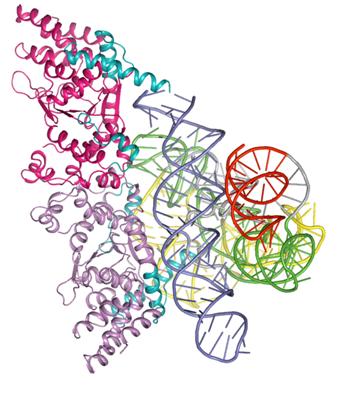Purdue University scientists studied the three-dimensional structure of a fungal protein bound to an RNA molecule and concluded that it is one of the missing evolutionary links in the transition from the age of RNA to the age of DNA

Purdue University scientists studied the three-dimensional structure of a fungal protein bound to an RNA molecule and were able to come to the conclusion that it is one of the missing evolutionary links in the transition from the RNA era to the DNA era.
According to the current theories, life began with the era of RNA. At that time, the molecule that could replicate itself was the RNA molecule, and not the DNA molecule that is common today. The ancient RNA was able to replicate itself and also carry out chemical reactions similar to proteins. At a certain point, RNA evolved and succeeded in creating proteins. Those proteins became responsible for carrying out the chemical reactions that were previously the sole function of the RNA molecule. According to Alan Lambowitz, director of the Institute of Cellular and Molecular Biology at the University of Texas, the researchers were able to discover one of those transition proteins, which cooperate with RNA and help it carry out various chemical reactions.
"Now we can see how RNA progressed and began to cooperate with proteins," he says. "This was an extremely important step, which has not been discovered until now."
Lambowitz and his research colleague at the University of Texas, Paul Faukstellis, wanted to see how the fungal protein worked. Barbara Golden's group - a structural biologist - took on the challenge and succeeded in crystallization of the molecule. In its crystalline state, the researchers were able to visualize the three-dimensional structure of the molecule.
"Of course we cannot see the evolutionary process in which a system based on RNA becomes a system based on RNA and proteins and finally DNA. We'll need a time machine to see it," says Golden. "But through this fungal protein, we can see the process happening in our time."
From observing the crystalline protein, the scientists were able to see that the protein performs the same chemical reactions that RNA performs in simpler organisms. According to Fauxtellis, the protein stabilizes a certain part - an intron - of the long RNA molecule, thus allowing the RNA to get rid of the rest of the unusable parts and create an active gene. "The RNA molecule in our study is indeed able to carry out specific chemical reactions on itself, but it needs a protein for the reaction to take place efficiently," he says.
Beyond the evolutionary insight derived from the research, the information can lead to clinical uses in the development of antifungal drugs capable of killing disease-causing agents. "This is one of the next steps," says Lambowitz. "Another step is to generate more detailed insights into the protein structure, so that we can understand the ancient chemical reactions."
The results of the article were published on January 3, in the prestigious journal Nature.

3 תגובות
Interesting, thank you.
Ori,
Thanks for your comment. I took note, thought a bit and did correct accordingly.
I object to the title! B -
http://www.sciencedaily.com
It appeared as:
Missing Evolutionary Link Found By Using Tiny Fungus Crystal
That is, without the news that was added here! There is no need for dramatization, the article is interesting in itself.